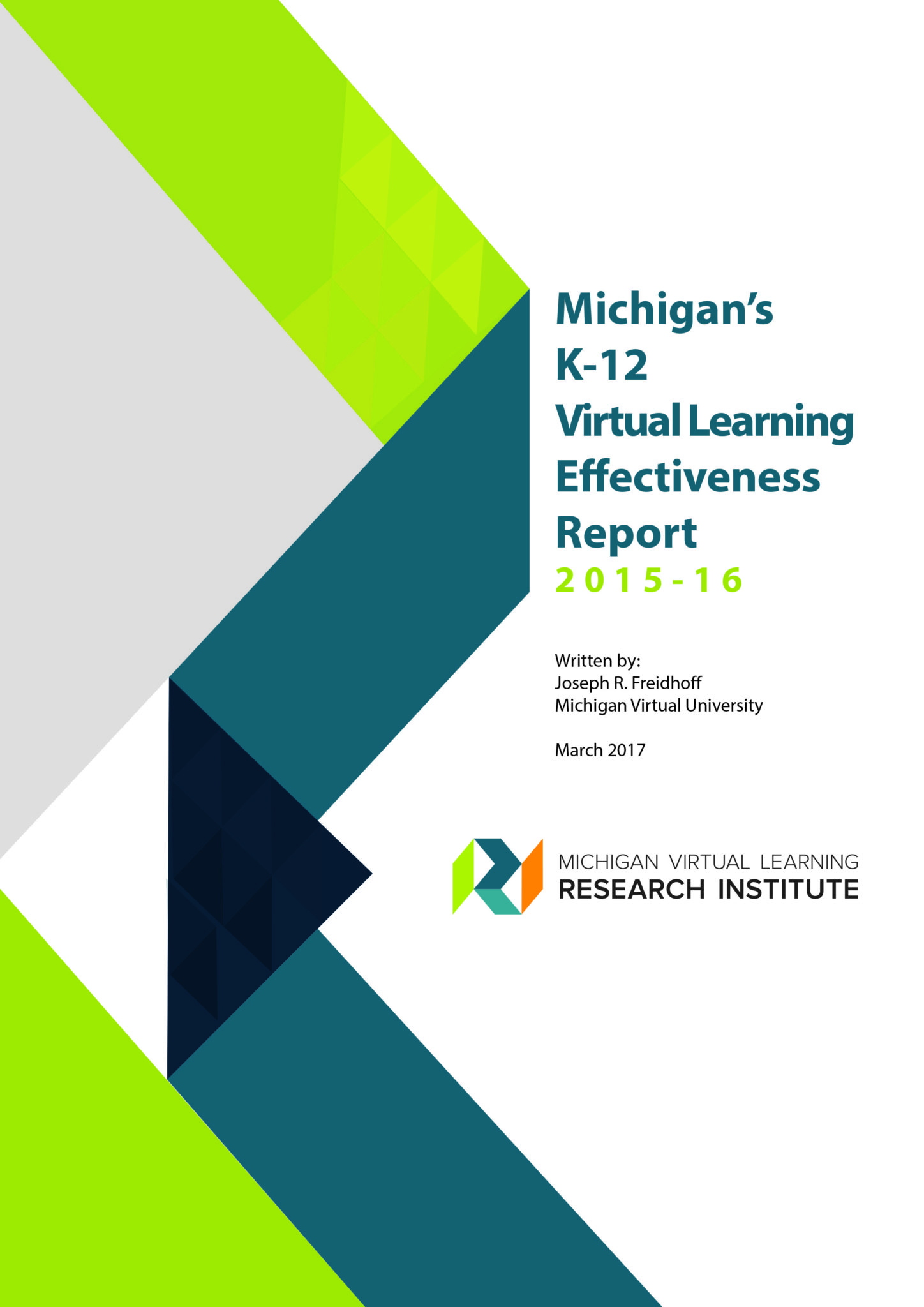Abstract
 Based on pupil completion and performance data reported by schools to MDE or CEPI, this report highlights 2015-16 enrollment totals, completion rates, and the overall impact of virtual courses on K-12 pupils. Over 90,000 K-12 students took virtual courses in 2015-16, accounting for over 453,000 virtual course enrollments. Local Education Agency (LEA) schools provided 54% of all virtual enrollments with Public School Academy (PSA) schools adding another 44% of the virtual enrollments. Enrollments were heaviest in the high school grades. The pass rate for virtual courses was 58%; however, half of virtual learners passed every virtual course they took. One in four virtual learners, on the other hand, did not pass any of the virtual courses they took. Sixty-three percent of Michigan school districts reported having virtual enrollments. About 6% of all K-12 students in the state took a virtual course.
Based on pupil completion and performance data reported by schools to MDE or CEPI, this report highlights 2015-16 enrollment totals, completion rates, and the overall impact of virtual courses on K-12 pupils. Over 90,000 K-12 students took virtual courses in 2015-16, accounting for over 453,000 virtual course enrollments. Local Education Agency (LEA) schools provided 54% of all virtual enrollments with Public School Academy (PSA) schools adding another 44% of the virtual enrollments. Enrollments were heaviest in the high school grades. The pass rate for virtual courses was 58%; however, half of virtual learners passed every virtual course they took. One in four virtual learners, on the other hand, did not pass any of the virtual courses they took. Sixty-three percent of Michigan school districts reported having virtual enrollments. About 6% of all K-12 students in the state took a virtual course.
At-A-Glance Infographic Download the Report
Prepared By
- Joseph R. Freidhoff – Michigan Virtual
What we already know about this topic
- Previous years of the Effectiveness Report have shown increasing numbers of Michigan students taking virtual courses, more schools offering virtual learning, and a rapid increase in the number of virtual enrollments.
- At the same time, the pass rate for virtual courses has been trending down.
- Many schools have high pass rates and show evidence of successful programs — too many do not.
- About half of students pass all of their virtual courses and about a quarter pass some of their virtual courses. There exists, however, a large number of students taking virtual courses — large numbers of virtual courses — without ever having success with them.
- Students in poverty represent a disproportionate number of virtual enrollments and there is a sizable pass rate difference for virtual learners based on poverty status.
What this report adds
- This report provides updates for the 2015-16 school year on the data presented in last year’s report. In addition, a few new analyses were conducted.
Implications for practice and/or policy
- The report shows both the successes and failures of virtual learning in the state. The data presented in the report identify areas to build upon as well as practices that should be avoided.
- The data in the report provide school districts with the opportunity to benchmark their own virtual learning programs against their peers in the state. This opportunity should be an important step in a program’s continuous quality improvement activities.